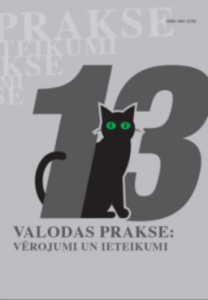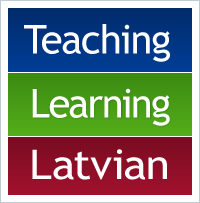Thirteenth Volume of Popular Science Articles „Language in Practice: Observations and Recommendations”
As this is the 13th volume in our series of popscience articles „Language in Practice: Observations and Recommendations”, we chose to let  the content mirror the associations of the number 13. Seriously but with a hint of humour about the „unlucky number”, the dark and hellish, the horrendous and the mystifying, about historical paradoxes, stereotypes and reality.
the content mirror the associations of the number 13. Seriously but with a hint of humour about the „unlucky number”, the dark and hellish, the horrendous and the mystifying, about historical paradoxes, stereotypes and reality.
Authors of these articles offer a fresh view on issues related to language reception and usage, whilst also opening up some historic pages concerning the development of languages, as well as in some articles presenting some contemporary research data. Chapter „Magic of Words and Numbers” includes articles exploring linguistic stereotypes and myths existing in various different cultures, stereotypical reception of the Latvian language and how it affects some language related attitudes and the implementation of the national language policy. Symbology and mythology related to number 13 in Latvian culture and in traditional cultures of other nations. Chapter „Special Words and Special Usages” includes five articles regarding in particular placenames related to the idea of death or other disturbing phenomena, company and corporation logos and names exhibited in public urban areas that include elements of word play, or another article regarding the usage of word „ devil” and its synonyms in the Latvian language, linguistic means of evoking horror and fear in horror stories, and obviously the exciting theme of swearwords and their functions. Chapter „ Word in a Dictonary” deals with the „life” of word „thirteen” in various kinds of dictionaries and language corpi, as well as the differences observed in three consecutive editions of one and the same dictionary. Chapter „Historical Paradoxes” includes interesting articles about how the word „black”played a certain role when Lovonian peasants were given names, and another article on peculiarities in the implementation of print ban in Latgale and Lithuania at the turn of the XIX/ XX century. In the final chapter of this volume you will find an overview of the work and activities of the Terminology Commission of the Latvian Academy of Sciences, recent decisions and recommendations by the Centre for State Language and the Expert Committee on Latvian Language, as well as bibliography of recent linguistics related books and publications, the usual humour page and brief notes about the authors.
This volume is a little unusual, due to the number 13, but it turned out bright and multifaceted and will surely be a useful source of material for anyone with interest in Latvian language and a wish to explore its rich culture, variations in usage and recent research results.
This volume is available for purchase by following the link below:
Rakstu krājumu iespējams iegādāties Latviešu valodas aģentūrā.



